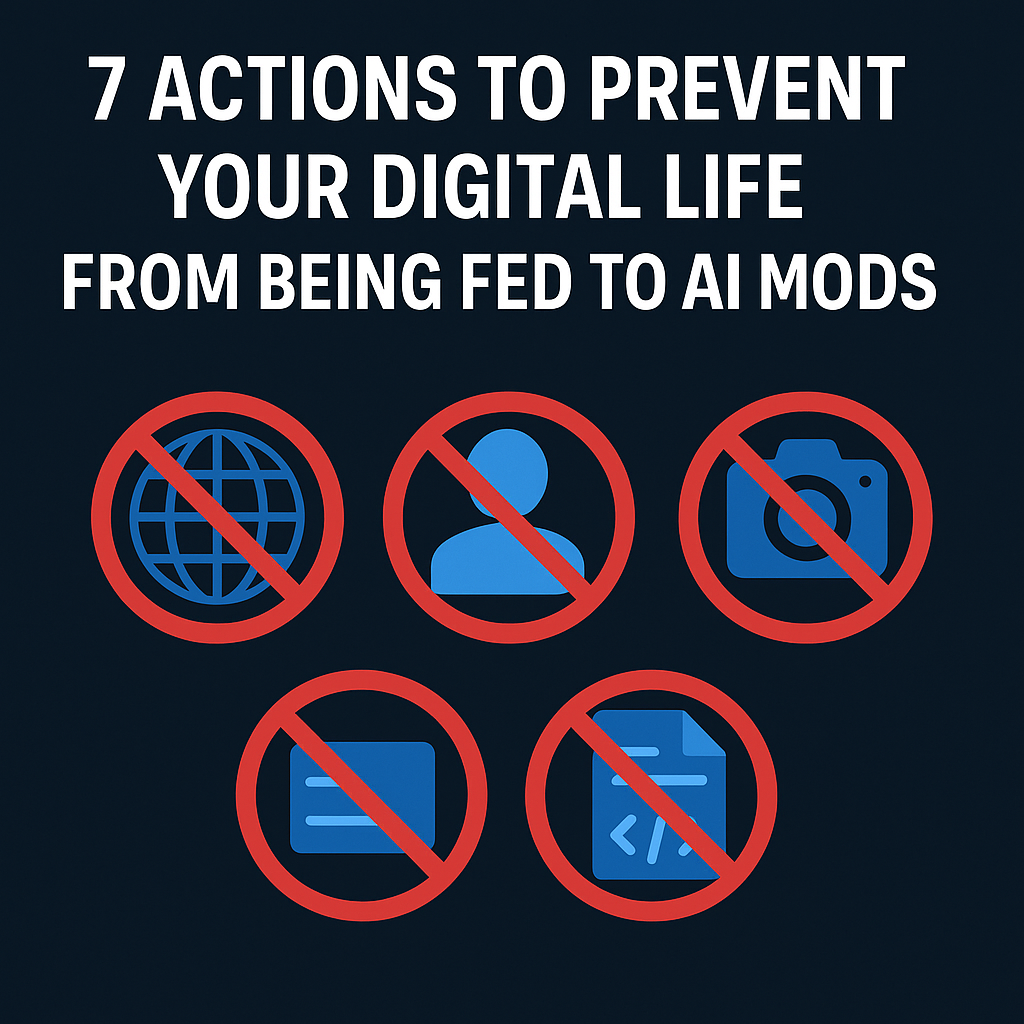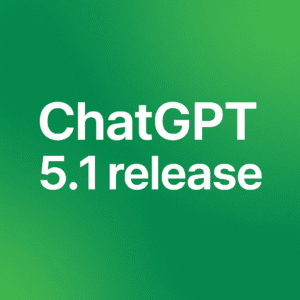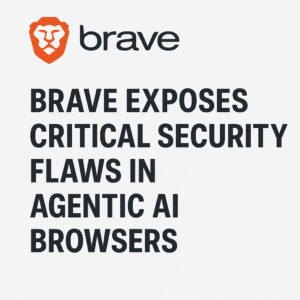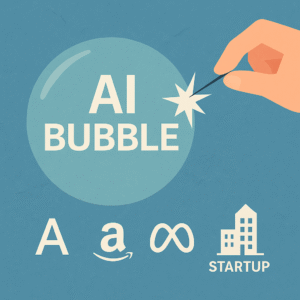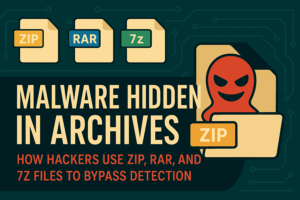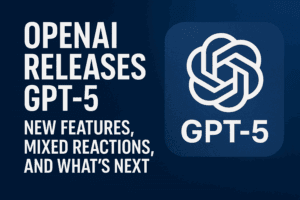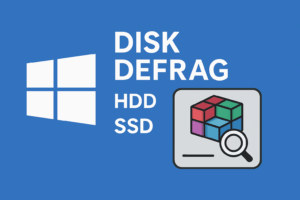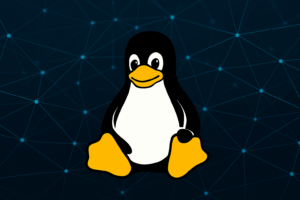Introduction
Artificial Intelligence is getting smarter every day — often by learning from the content we post online. From public forums and blog posts to photos and code repositories, AI models are trained on massive amounts of internet data — and your digital footprint might be part of it.
If you’re concerned about your privacy and want to take control, here are 7 practical actions you can take to reduce the chances of your data being used to train AI models.
1. Block AI Crawlers from Your Websites
If you run a blog, portfolio, or any public website, you can stop many AI companies from scraping your content by updating your robots.txt file. This small text file tells bots what they’re allowed to access.
Here’s how to block common AI bots:
User-agent: GPTBot
Disallow: /
User-agent: CCBot
Disallow: /
While not all bots respect these rules, major players like OpenAI and Common Crawl do. For added control, consider firewall rules (e.g., via Cloudflare) to block specific user agents or IPs associated with scrapers.
2. Think Before You Share Publicly
Every tweet, comment, photo, or forum post you make in public can potentially end up in an AI training dataset — especially if it’s on platforms known to be indexed by scrapers.
To limit your exposure:
- Avoid posting sensitive or personal information in public spaces.
- Review privacy settings on your social media and set profiles or posts to “private” when possible.
- Skip platforms that don’t let you opt out of data sharing or content indexing.
- If you’re publishing content (blogs, code, etc.), consider adding a restrictive license like CC BY-NC-ND to signal that you don’t allow reuse for commercial or derivative purposes — including AI training.
A little awareness goes a long way in keeping your digital traces under your control.
3. Choose Privacy-Respecting Platforms
Not all online services treat your data the same. Some monetize it, others protect it. When possible, switch to platforms that explicitly respect your privacy and commit to not sharing your data with third parties — including AI companies.
Here are a few trusted alternatives:
- Search: DuckDuckGo or Startpage instead of Google
- Messaging: Signal instead of WhatsApp or Facebook Messenger
- Browsers: Firefox with privacy extensions instead of Chrome
- Email: ProtonMail or Tutanota instead of Gmail
Also, look for platforms that let you opt out of data sharing or crawling by default — some even block AI scrapers proactively.
Choosing services that align with your privacy values is one of the most effective long-term steps you can take.
4. Use Tools to Detect and Remove Your Data
You may already have content in datasets used to train AI models — especially if you’ve uploaded images or written on public platforms. Fortunately, some tools can help you check and even request removal.
- Have I Been Trained: Search image datasets like LAION to see if your photos or artwork were included.
- Glaze: A tool for artists that subtly alters images to make them harder for AI to learn from.
- Data removal requests: Under laws like GDPR or CCPA, you can ask platforms or companies to delete your data — though success varies.
It’s not always possible to erase everything, but taking these steps can limit future exposure and show companies that people care about how their data is used.
5. Harden Your Browser Against Trackers and Scrapers
Your browser is a key gateway to your digital life — and it leaks more than you might think. AI scrapers and data brokers often gather information through tracking scripts, cookies, and even browser fingerprinting.
To reduce your online trace:
- Use privacy-focused extensions like uBlock Origin, Privacy Badger, and NoScript.
- Block third-party cookies and disable ad tracking in your browser settings.
- Consider anti-fingerprinting features available in browsers like Firefox (Enhanced Tracking Protection) or Brave (built-in shields).
- Use a trusted VPN to mask your IP address and avoid location tracking.
Locking down your browser won’t just protect you from ads — it makes your online presence harder for AI systems to follow and exploit.
6. Support Ethical AI and Privacy Laws
Individual action is powerful — but lasting change comes from systemic rules. Many governments and organizations are pushing for stronger privacy protections and more transparent AI development. You can be part of that momentum.
Here’s how:
- Support or follow regulations like GDPR, CCPA, and the proposed EU AI Act, which aim to limit how data is collected and used.
- Back projects and platforms that commit to AI transparency and data consent.
- Speak out: whether by signing petitions, writing to lawmakers, or simply raising awareness in your circles, public pressure matters.
The more people push for consent-based AI, the harder it becomes for companies to ignore the importance of privacy.
Conclusion
While you can’t control every corner of the internet, you can take meaningful steps to protect your digital life. By blocking AI crawlers, choosing better platforms, locking down your browser, and supporting ethical policies, you reduce the chances that your data ends up in a training set — without your permission.
Digital privacy isn’t just a tech issue — it’s about your autonomy in an AI-powered world. Start with one action today, and build from there.

Founder of ToolsLib, Designer, Web and Cybersecurity Expert.
Passionate about software development and crafting elegant, user-friendly designs.
Stay Updated with ToolsLib! 🚀
Join our community to receive the latest cybersecurity tips, software updates, and exclusive insights straight to your inbox!
